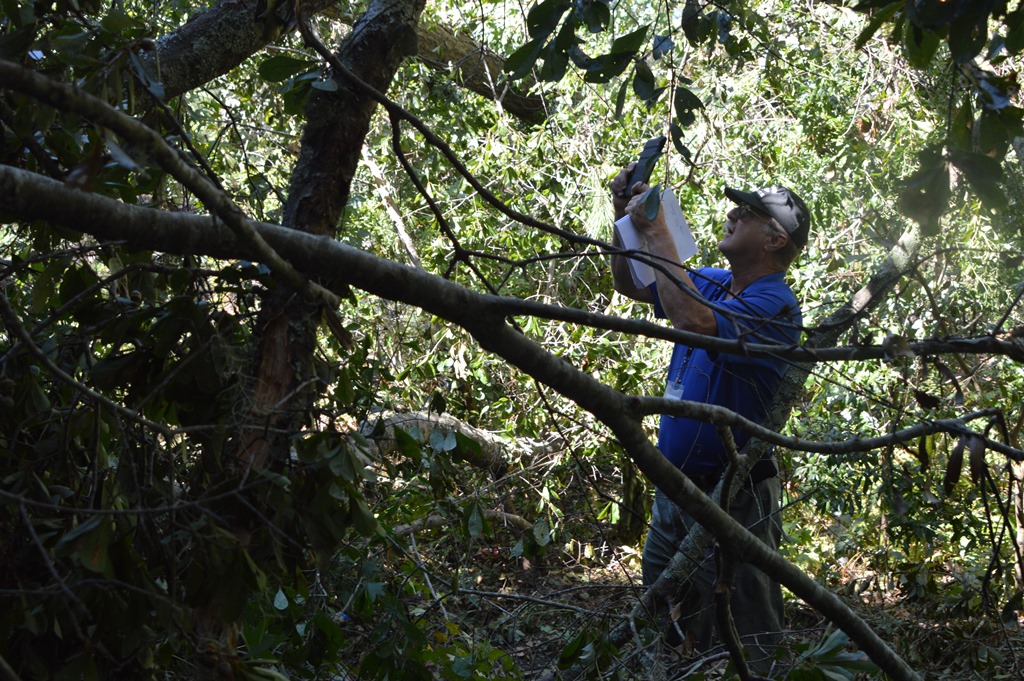Learning how to use new technology in the middle of a tropical storm is inherently challenging. But for the Town of Bluffton's Public Works Department, debuting new software during Tropical Storm Irma last September offered the town a unique opportunity to excel in emergency response — one that served them well in the wake of Hurricane Florence in September.

Meticulous documentation and asset tracking are crucial to emergency
response and FEMA assistance. Photo: Town of Bluffton.
On the night of Irma's landfall, Town Manager Marc Orlando remembers public works employees gathered around a TV watching a demonstration about how to install and use asset-tracking software to help gather data to send to the Federal Emergency Management Agency.
"We made and implemented a decision hoping it would work in our favor," said Orlando.
Officials expected to put the software to use after the storm, which damaged the South Carolina coastline in September 2017. However, Irma gave them the chance to collect data during a major weather event. The software allowed staff members to track each task on their mobile phone or tablet, which ultimately produced detailed documentation for FEMA, according to a town news release.
Public works employees also inventoried equipment, programmed FEMA hourly rates, and documented what each task required in terms of labor hours and resources. By doing so, the town now has the data to make to better-informed decisions about storm response in the future.
"Using this software in real time during Irma saved the town countless hours of post-storm paperwork," said Bryan McIlwee, Bluffton's director of engineering. The town's public works crew logged more than 200 hours of recovery work and filed for FEMA reimbursement as they accomplished each task.
While the six-month Atlantic hurricane season officially runs through November 30, it's always helpful to be proactive and know ahead of time how to effectively prepare and respond to natural disasters.
As the Town of Bluffton employees showed, meticulous documentation is crucial.
In fact, said Joseph "Bo" Bowers, fire chief of the City of Hanahan, it's the No. 1 thing to do when seeking help from FEMA in the immediate aftermath of a storm.
"This of course assumes that a disaster declaration has been issued for your area, and you are working with a FEMA rep," he said. "If you were not working with a FEMA rep, you will need to contact your state emergency operations center to be assigned one."
Preparing before a storm starts well in advanced of an incident.
"The city or town must have all personnel trained in ICS 100, 200, 700 and 800," said Bowers, referring to some of FEMA's National Incident Management System core curriculum courses.
"Anyone who is generalized in command staff, such as finance, public information officer, logistics, operations, safety and medical, all need to have ICS 300 and 400. These people should practice writing Incident Action Plans at least quarterly, as well as all other staff completing 214 Unit Activity Logs."
Bowers emphasized the value of becoming proficient at writing the plans.
"One thing that we have found that works well for us is completing an IAP for any special event, just as practice for any event that may arise," he said. "The other thing that is important prior to a storm is a clear and ratified city emergency action plan that outlines your preparation phase, response phase and recovery phase to an event. Next is paperwork. Practice using the FEMA forms. Utilize 214 Unit Activity Logs to document all activities of each asset employed during the event."
Bowers said the activities that should be documented could be as detailed as how long a generator ran, the beginning and ending mileage of a response vehicle, hours accrued on diesel engines, and how long a chainsaw was used.
He said the forms are tedious but essential to ensure federal funds.
Other tips
- Make sure you are purchasing necessities and only things that you will use related to the emergency at hand.
- Have a clear purchase and procurement policy for storm-related needs.
- Ensure that employees track where all the city's new and old assets are located, how and where they were used, and what they were used for. All of this must be provided as justification to FEMA about what you did during the emergency event.
- Keep pre-incident photos of all facilities and capital assets. After the incident, these photos will be used to justify damage claims.
